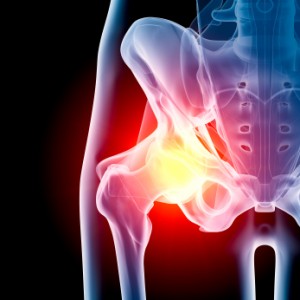
Ask 99% of the world that question and a good chunk will say not enough calcium combined with aging. But new evidence suggests that conventional wisdom may be wrong.
And it all comes from deer antlers.
It all started in Spain in 2005, when researchers began to notice lots of broken antlers in the deer population. Upon investigation, they discovered a certain mineral – or the lack of it to be more precise – was to blame. And that mineral wasn’t calcium.
To the contrary, they discovered the weakening was due to manganese depletion caused by the deer’s diet. That year saw an intensely cold winter which in turn caused plants to reduce their manganese concentrations in response to such stress.
Manganese is known to be necessary for calcium absorption. So the researchers (who had previously noted the mineral’s necessity in previous antler studies) if enough manganese isn’t present for calcium to be absorbed, it winds up being excreted in urine.
If the body needs calcium somewhere in the body – say the brain perhaps – then calcium is removed from the skeleton to meet the need because blood levels of calcium must remain constant. The same is true for manganese.
According to researchers, “Our hypothesis is that when the human body absorbs less manganese or when it is sent from the skeleton to other organs that require it, such as the brain, the calcium that is extracted at the same time is then not properly absorbed and is excreted in the urine. It is in this way that osteoporosis can slowly strike.”
“Antlers grow by transferring 20% of the skeleton’s calcium towards their structure. We therefore saw that it was not calcium deficiency that caused the weakening but rather the deficiency of manganese,” clarifies researcher Tomás Landete. “The lack of manganese was almost as if the ‘glue’ that sticks calcium to antlers bones was missing.”
But why are they so sure the problem is just a lack of manganese? Well it turns out osteoporosis, as bad as it is, is only part of the problem.
The Connection To
Alzheimers And Parkinsons
In the case of humans, the researchers suggest that manganese is extracted from the bones when it is required by the “most important” organs, such as the brain. The researcher adds that “maintaining the bones is important, but even more so is sustaining the working of the brain, which uses 25% of our energy intake when at rest.”
So the team theorized that if manganese deficiency was really the problem, then people with osteoporosis would have a higher incidence of Alzheimers and Parkinsons. And guess what?
To put this theory to the test, they analysed data from 113 patients who were operated on for osteoporosis and osteoarthritis (wear and tear of joint cartilage) at Hellín Hospital in Albacete, Spain between 2008 and 2009. Some 40% of those operated on for osteoporosis showed some form of cerebral dysfunction whereas this was not the case in any of the 68 patients operated on for osteoarthritis.
This is the first study of its kind, so much more research into the theory of manganese deficiency as the root of osteoporosis will have to be done before the link is established as fact.
However, we’ve been saying for nearly 2 years now that part of the problem is that so many people take calcium supplements without the supporting ingredients calcium needs to be utilized by the body. And while the focus on manganese is new, the products we’ve long endorsed for calcium do contain it.
From the very beginning, we’ve recommended the combo of Calciology™ Calcium Wellness Formula and The Foundation™ Multivitamin. Between these two supplements, nearly every nutrient – the big ones and the trace minerals like manganese – are covered. (The only thing missing – and we’ve pointed this out to the manufacturer, are copper and boron).


Leave a Reply
You must be logged in to post a comment.